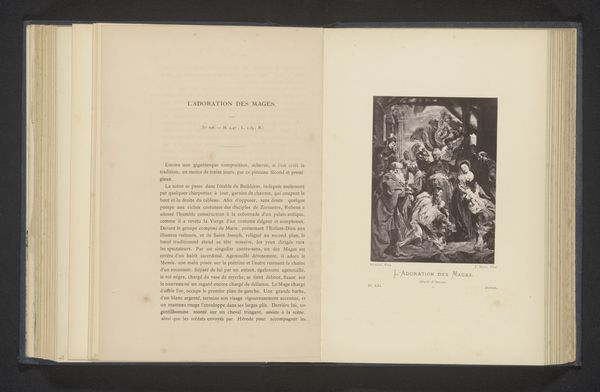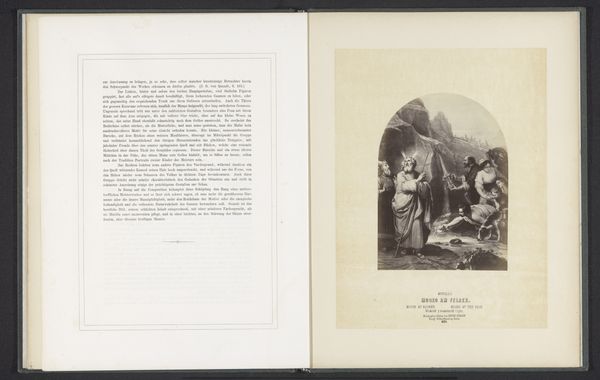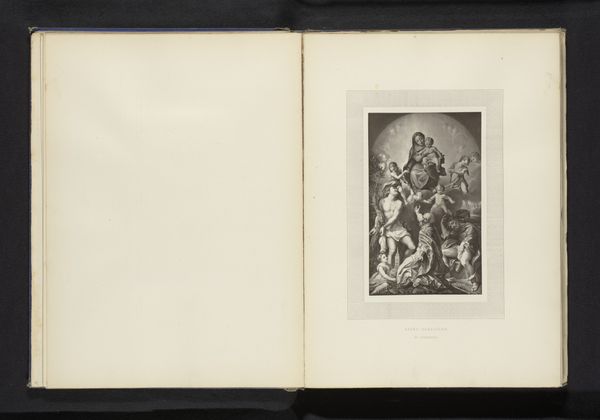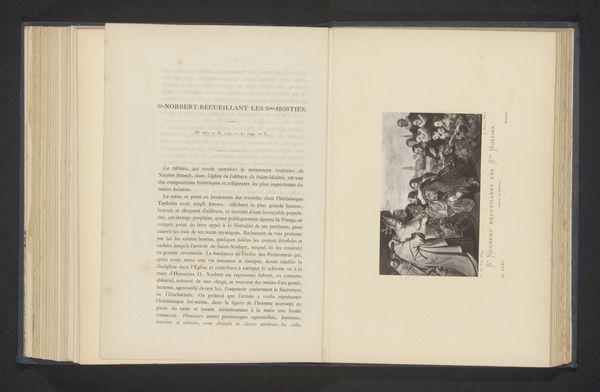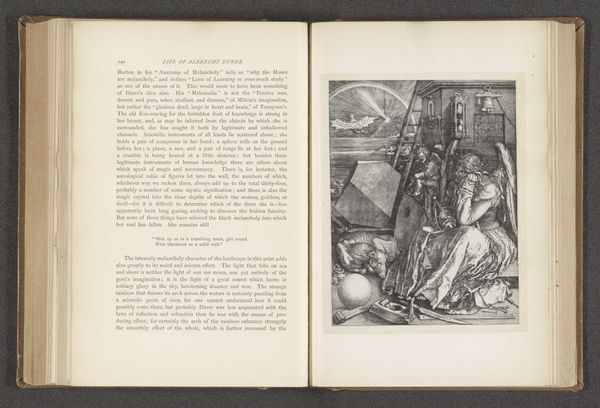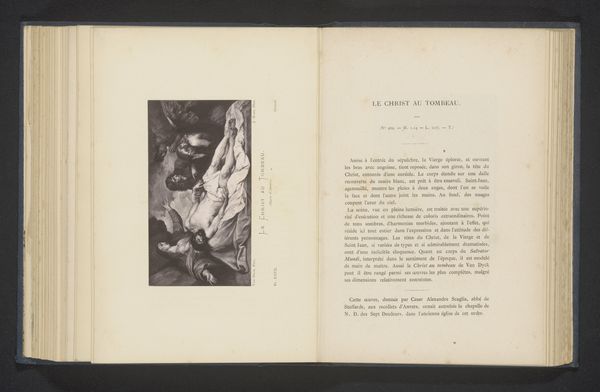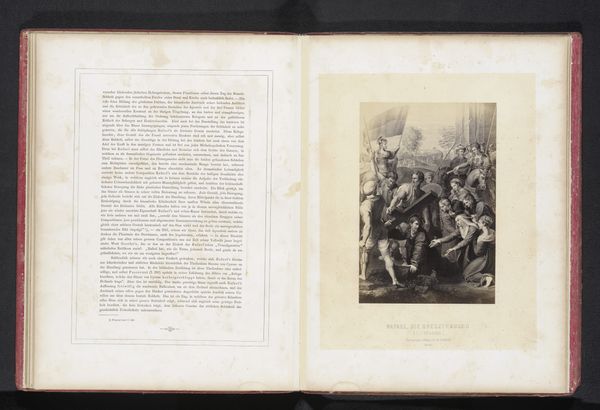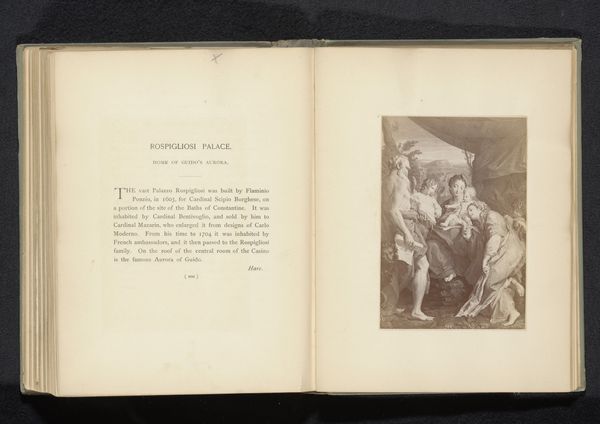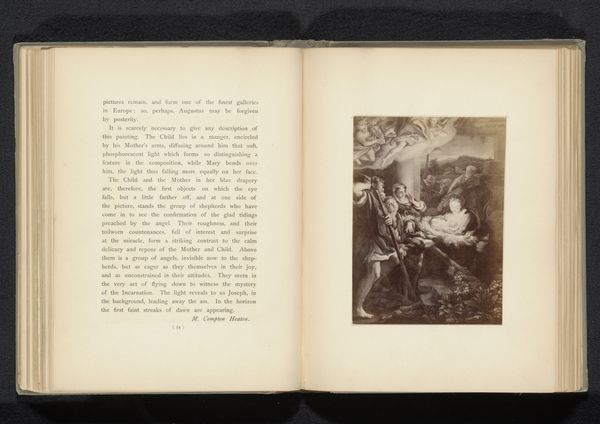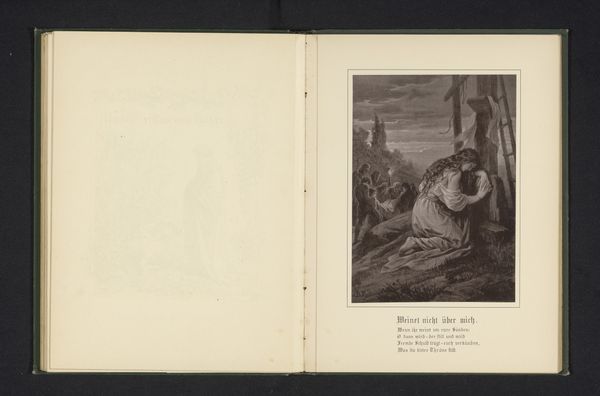
Reproductie van een schilderij van de verscheining van Maria aan de heilige Bernard door Filippino Lippi before 1885
0:00
0:00
Dimensions: height 232 mm, width 240 mm
Copyright: Rijks Museum: Open Domain
Émile Aubry made this reproduction of Filippino Lippi's painting of the Virgin Mary's appearance to St. Bernard. It's a lithograph from the late 19th century and appears to have been printed in a book about Italian art. Filippino Lippi lived in Florence during the Renaissance, when wealthy patrons commissioned religious paintings to display their power and piety. Lippi's original artwork would have been exhibited in a church or private chapel as an object of veneration and a demonstration of the patron's commitment to the Catholic faith. But by the late 19th century, religious imagery was often reproduced in books, making it more widely available to a growing reading public. What does it mean to take a painting out of its original context? How does the meaning of an image change when it's reproduced in a book? An art historian can answer these questions by researching the biographies of the artists, the patronage system, and the history of the institutions that exhibited the artwork. By considering these social factors, we can gain a deeper understanding of the original painting and this reproduction.
Comments
No comments
Be the first to comment and join the conversation on the ultimate creative platform.
